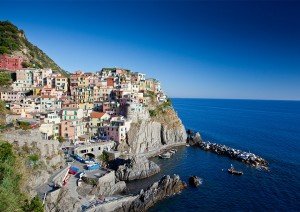Top Things to Eat in Liguria, Italy: 5 Traditional Dishes
May 2, 2024
There are a great many excellent gastronomic outputs to indulge in during your visit to Liguria, and you will not be disappointed in the experience.…
Read This Post When browsing through our 90+ cooking vacation itineraries, you’ll often see us refer to beautiful UNESCO World Heritage sites. But what does this mean exactly? And why are they worth a visit on your next European vacation? (As well as trips to other continents for that matter?)
When browsing through our 90+ cooking vacation itineraries, you’ll often see us refer to beautiful UNESCO World Heritage sites. But what does this mean exactly? And why are they worth a visit on your next European vacation? (As well as trips to other continents for that matter?)
The World Heritage Committee is a division of the United Nations Educational, Scientific, and Cultural Organization (UNESCO). Formally established in the early 1970s, the committee was charged with choosing “superb natural and scenic and historic sites” that were open to the public and needed protection.
See UNESCO sites on a culinary vacation in Spain.
 In order to be added to the list of UNESCO sites, the committee looks at a variety of criteria, which includes cultural and natural considerations. Cultural criteria include such things as whether the work is a result of human creative genius, or if its an important architectural work. Criteria for natural sites include such considerations as whether it represents major stages of the earth history, or if it contains natural habitats of endangered species. No matter what the criteria used, the committee chooses places that have “outstanding universal value.” In other words, you won’t be able to see anything else like it anywhere else in the world.
In order to be added to the list of UNESCO sites, the committee looks at a variety of criteria, which includes cultural and natural considerations. Cultural criteria include such things as whether the work is a result of human creative genius, or if its an important architectural work. Criteria for natural sites include such considerations as whether it represents major stages of the earth history, or if it contains natural habitats of endangered species. No matter what the criteria used, the committee chooses places that have “outstanding universal value.” In other words, you won’t be able to see anything else like it anywhere else in the world.
Sometimes entire neighborhoods and cities are declared a World Heritage Site, including the stunning historic center of Florence, which UNESCO calls “the symbol of the Renaissance.” When you walk through Florence’s streets on our cooking vacation Florence for the Food Lover or our Classic Tuscan Table tour, which includes 2 nights in Florence, you can admire the extraordinary architectural work and art that was built in the 15th and 16th centuries. Some particular sites of note are the Santa Croce Church, the Uffizi, and architectural and art wonders by the likes of Brunelleschi and Michelangelo, among others.
See all our culinary and cultural tours in Tuscany.
 The city of Alberobello is another World Heritage site, as its populated by trulli, or limestone houses that used mortarless construction, a prehistoric technique. You can tour this “fairtytale” city during our culinary vacation A Culinary Adventure in Puglia.
The city of Alberobello is another World Heritage site, as its populated by trulli, or limestone houses that used mortarless construction, a prehistoric technique. You can tour this “fairtytale” city during our culinary vacation A Culinary Adventure in Puglia.
 The Cinque Terre too spans a large area, as “Cinque Terre” means five lands, or villages, in Italian. This UNESCO-protected area in Liguria is known for its rugged cliffs, but it’s also a wonderful place for a gastronomic vacation. Another UNESCO site in Liguria is the old city center of Genoa–one of the largest old medieval neighborhoods in Europe.
The Cinque Terre too spans a large area, as “Cinque Terre” means five lands, or villages, in Italian. This UNESCO-protected area in Liguria is known for its rugged cliffs, but it’s also a wonderful place for a gastronomic vacation. Another UNESCO site in Liguria is the old city center of Genoa–one of the largest old medieval neighborhoods in Europe.
Over in France, during Best of Bordeaux, explore the city of Bordeaux, a UNESCO World Heritage site known for its classical and neoclassical buildings as well as its wine, of course.
In Spain, discover the exquisite Moorish Alhambra Palace during our culinary vacation Cooking in Andalusian Olive Country. Once a rural residence for Spanish rulers known as emirs, today Alhambra and the Generalife continue to be a beautiful and well-maintained example of an Arab residence.
 This list could go on and on, from Morocco to India, from Portugal to Greece. After all, UNESCO has designated more than 800 sites, buildings, and cities around the world as World Heritage sites, and every one of them is worth a visit. The only question is: which one do you want to visit first?
This list could go on and on, from Morocco to India, from Portugal to Greece. After all, UNESCO has designated more than 800 sites, buildings, and cities around the world as World Heritage sites, and every one of them is worth a visit. The only question is: which one do you want to visit first?
By Liz Hall
Find more photos, videos, food facts, and travel stories from The International Kitchen on Facebook, Instagram, Pinterest, Twitter, and YouTube.
Sign up to receive our newsletter, which includes travel tips, recipes, promotions, and information on our best cooking vacations.
Originally published July 2, 2013.